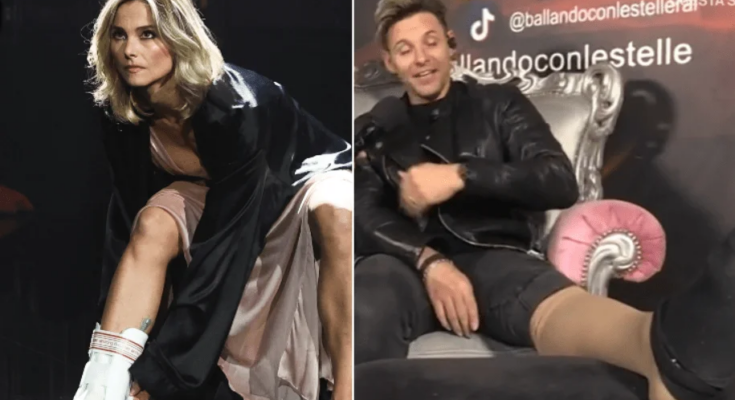Carlo Aloia was the last person to be hospitalized on the TV programDancing with the stars‘. Dance teacher and colleague Nancy Brilli was forced to stop practicing. However, they were forced to complain in the following edition: Barbara D’Urso, at first, and Francesca Fialdini and Giovanni Pernice who had a series of problemshe’s on the leg and she’s on the shoulder. Every edition of the show hosted by Milly Carlucci always features ‘broken’ dancers, just remember Luisella Costamagna who was almost forced to retire due to a ‘fractured’ ankle and then became champion. Don’t forget the tears of Nina Zilli, who retired due to three broken ribs and leg problems. Dancing is no joke and comes with risks.
“Like all new sporting activities, dancing can also expose the dancer to risk of injury, especially if not adequately prepared from an athletic standpoint. In addition to a general warm-up involving the upper and lower limbs, dancers should set aside time for athletic preparation with technical movements specific to the foot and ankle, such as passive stretching of the Achilles tendon and plantar fascia with elastic bands.” So to Adnkronos Salute Elena Manuela Samaila, professor of Orthopedics and Traumatology at the University of Verona, member of Siot, Italian Society of Orthopedics and Traumatology, and former president of the Italian Society of Ankle and Foot (Sicp).
For those who are starting from scratch and have to appear in a competition, “special attention must be paid to the footwear they must wear both during training and during competition.
Traumatic pathology in dancers
Which joints are most stressed? “In the feet, the joints that are most overloaded are the metatarsophalanges (in all dances that require dancing on pointe even if there are heels), the fifth metatarsal (when turning and landing from a jump), the ankle both as a joint and as an external ligament compartment (for ankle sprains)”, answered Samaila.
And what are the most frequently performed operations in terms of surgery? “Among the traumatic pathologies in dancers – he explained – we find stress fractures of the foot, Jones fractures (base of the diaphysis of the 5th metatarsal), sprains of the ankle and foot, posterior impingement of the ankle, detachment of the epiphysis in dancers who are still children, and fractures of the toes. Usually in classical dancers, the most frequently performed operations are on the joint of the base of the 5th metatarsal and posterior impingement. However, sprains heal with immobilization and adequate rest followed by physiotherapy.”
What advice can you give to those who want to start trying out dancing? “I recommend dedicating yourself before and after dancing to adequate athletic preparation of the muscles, joints and tendons, especially for the ankles and feet. It is better to wear sports shoes that protect the feet than to dance barefoot”, advises the former president of the Italian Ankle and Foot Society. And regarding previous orthopedic interventions that might advise against choosing dancing as a hobby, “there are no specific contraindications to dancing for those who have had orthopedic problems in the past – he explains – It’s good to do athletic training and do activities gradually. That’s the secret to not getting hurt”, says Samaila.


